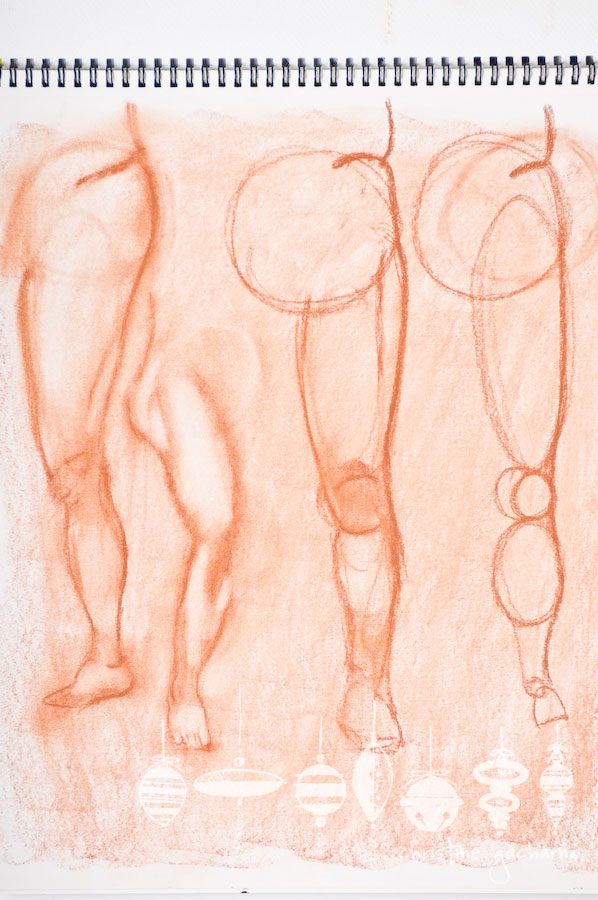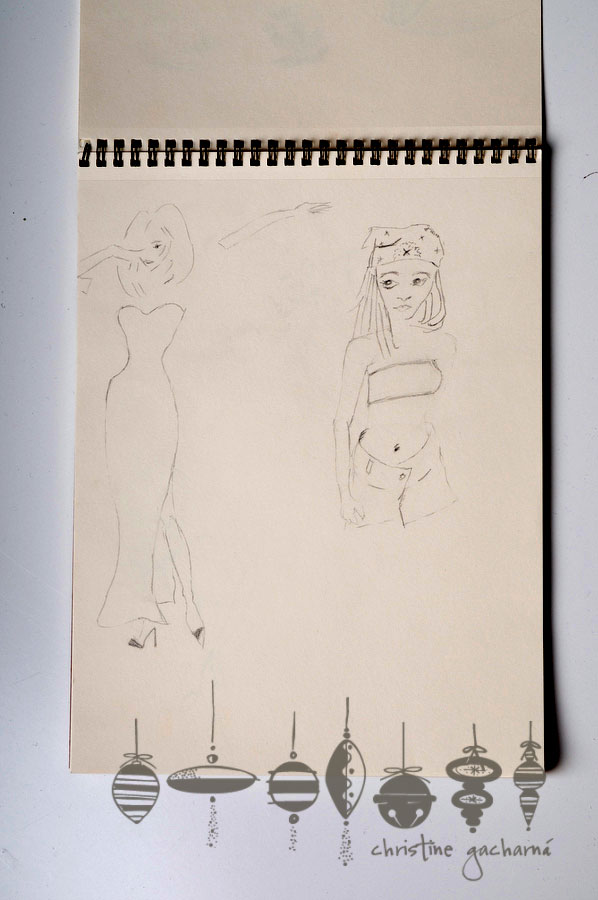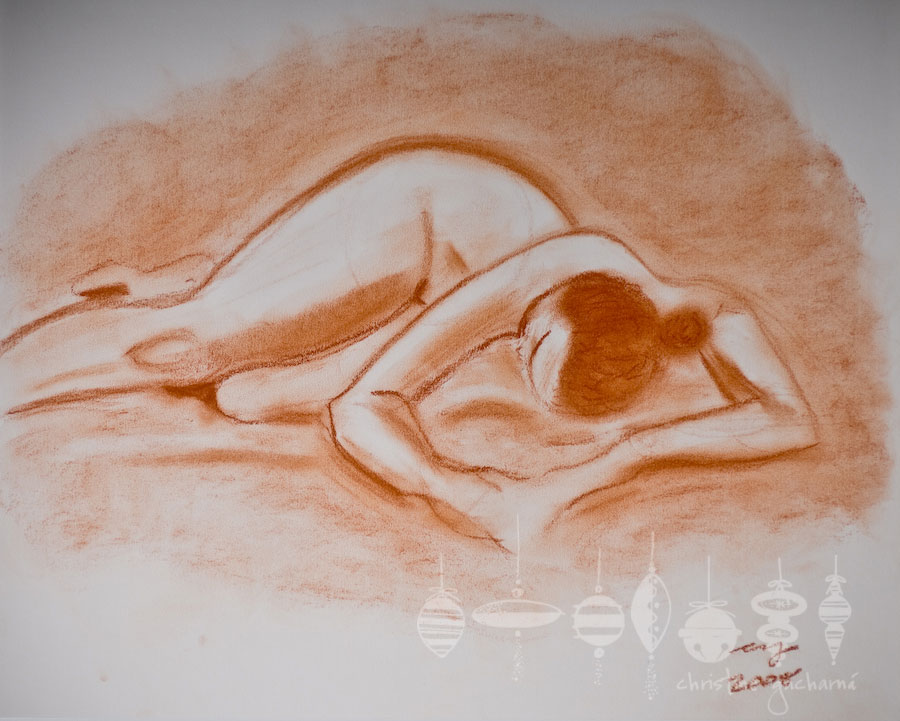Beginning Figure Drawing
My friend Suzanne shows up our first day of figure drawing class at The Art League with her dog-eared portfolio and familiar supplies.
I showed up with my brand spankin’ new everything fresh from the bookstore. I sharpened my pencil and took out my “kneaded eraser” (I had to ask for help with finding that one, having never used one before) and was lovingly unwrapping it.
“Have you ever used one of these before?” Suzanne asked. I told her no. She took it from me, saying she’d show me how. She ripped open the cellophane, tossing it to the floor, and began tearing my beautiful little perfectly clean studio-gray block into pieces — pulling, tugging, (uh, kneading perhaps?) — until she looked up and saw what must’ve been my completely horrified expression. She burst out laughing.
The kneaded eraser became our metaphor for the class, Suzanne drawing wildly (and expertly; at one point, she got in trouble by the instructor for making her “blob of clay” exercise look too realistic) and Christine carefully erasing each line until it was perfect so she could move on (at some points getting in trouble for being too cautious.)
Our instructor started us out with judging angles, measuring, seeing the model as a shape, design and placement of our drawing, framing. We began with stick men, then the three major masses (head, rib cage and pelvis). My first attempt at the process (working left to right) was pretty good if you’re into unisex.
It got more realistic, and I got excited. Look a me! Who know I could draw? I turned him to the side, and then I played.
After such successful whimsy, our instructor started the next week’s class by telling us that drawing without connecting the lines yields comics, not figure drawing.
Bubble burst, I swallowed hard and moved on to arms and legs, this week with Conte crayon.

For some reason, I drew from right to left; it’s easy to see my first leg on the right and the progression of each new attempt as it moves left. Second from the left is my final attempt, and if you mentally place the barstool under the model to support him, it looks more believable.
Next we moved to heads and foreshortening.
I hated the look of foreshortening and I wasn’t particularly good at it, so I moved to the other side of the room to avoid it.
I also hated that we had switched from Conte crayon back to pencil, and I eventually gave up on the model and started sketching Suzanne at work on the other side of the room. Like a real artist, she was wearing a visor to keep the glare of the lights on the model from distracting her as she worked.
In a photography workshop the summer of 2006, my instructors (Paul Elledge and Lesha Overturf) forced me to take self-portraits, something I’m not particularly good at and don’t necessarily enjoy. Forced to face the fear, I walked away from that workshop back into life and every now and again take a self-portrait just for fun because I can.
Lisa Semerad did that for me with foreshortening. She forced me to return to my usual spot, directly in front of the model, and draw my first long pose with foreshortening included.
And here’s the lightbulb moment: she had us fill our paper with Conte crayon, spread it all over and rub it to make it smooth. Then she said, “Okay, you’re half done!”
Half done?
And then it hit me: we were manipulating color to simulate light. Having already placed most of the color on the page, all I needed to add was more color to form the figure lines and shadows, and then subtract color (using my balled-up kneaded eraser) to create the highlights to make it believable.
Subtracting Conte crayon was (pardon the pun) literally the highlight of the class for me — painting with light!
As it turns out, I learned as much about photography in Lisa Semerad’s figure drawing class as I learned about figure drawing. And a little bit about life, too.
I’m not taking a photography class next month. I enrolled instead in a yoga class and enrolled my daughter in a drawing class. She worries that she doesn’t know enough yet to take the drawing class. I reassure her that none of us know all there is to know by third grade or age 39. It’s a lifelong process, learning; and, ranking right up there with great teachers, one of life’s sweetest gifts.

